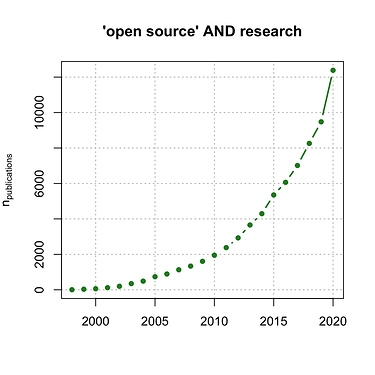Dear openmod community,
This is kind of a naive, and most certainly a wide question, but I was wondering: how can we qualify and quantify the benefits of open energy modelling ? In other words: how to assess that the open energy modelling we put in practice is usable and useful ? Do you have methods or examples of such work ? For instance:
- Surveys towards the models developers / users / results recipients ?
- Criteria on the tools themselves, such as the work of Cao et al. [1] or Groissbock [2] ?
- …?
To be precise, I am not asking about open energy modelling interests, limits or good practices: I think I now have a pretty good understanding of these after the truly interesting presentations and exchanges we had in Berlin at the openmod workshop and on the forum; plus thanks to the reading of articles such as [3-6]. To rephrase it once again, my question would be: how to quantify the identified interests of such good practices ?
Thanks a lot !
References:
-
Cao, Karl-Kiên, Felix Cebulla, Jonatan J Gómez Vilchez, Babak Mousavi, and Sigrid Prehofer (28 September 2016). “Raising awareness in model-based energy scenario studies — a transparency checklist”. Energy, Sustainability and Society. 6 (1): 28. ISSN 2192-0567. doi:10.1186/s13705-016-0090-z. Open access.
-
Groissböck, Markus (1 March 2019). “Are open source energy system optimization tools mature enough for serious use?”. Renewable and Sustainable Energy Reviews. 102: 234–248. ISSN 1364-0321. doi:10.1016/j.rser.2018.11.020. Closed access.
-
Pfenninger, Stefan, Joseph F DeCarolis, Lion Hirth, Sylvain Quoilin, and Iain Staffell (February 2017). “The importance of open data and software: is energy research lagging behind?”. Energy Policy. 101: 211–215. ISSN 0301-4215. doi:10.1016/j.enpol.2016.11.046. Open access.
-
Bazilian, Morgan, Andrew Rice, Juliana Rotich, Mark Howells, Joseph DeCarolis, Stuart Macmillan, Cameron Brooks, Florian Bauer, and Michael Liebreich (1 October 2012). “Open source software and crowdsourcing for energy analysis”. Energy Policy. 49: 149–153. ISSN 0301-4215. doi:10.1016/j.enpol.2012.06.032. Working draft.
-
Morrison, Robbie (April 2018). “Energy system modeling: public transparency, scientific reproducibility, and open development”. Energy Strategy Reviews. 20: 49–63. ISSN 2211-467X. doi:10.1016/j.esr.2017.12.010. Open access.
-
Pfenninger, Stefan, Lion Hirth, Ingmar Schlecht, Eva Schmid, Frauke Wiese, Tom Brown, Chris Davis, Matthew Gidden, Heidi Heinrichs, Clara Heuberger, Simon Hilpert, Uwe Krien, Carsten Matke, Arjuna Nebel, Robbie Morrison, Berit Müller, Guido Pleßmann, Matthias Reeg, Jörn C Richstein, Abhishek Shivakumar, Iain Staffell, Tim Tröndle, and Clemens Wingenbach (2017). “Opening the black box of energy modelling: strategies and lessons learned”. Energy Strategy Reviews. 19: 63–71. ISSN 2211-467X. doi:10.1016/j.esr.2017.12.002. Open access.
PS : do not hesitate to ask me precision if this is not clear, or to ask me to change tags / category if necessary (I was not too sure about where to ask this).
